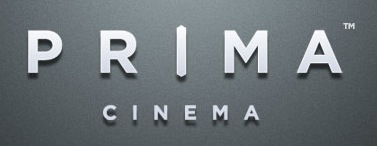On Tuesday, Sony’s CFO, Rob Wiesenthal, said that his company was not only looking to cable and satellite operators to provide early releases for the studio’s titles, but has high hopes for its new streaming video service, Qriocity. The service was established earlier this year to beam content directly into Sony’s consumer electronics products (televisions, video game consoles, Blu-Ray players, etc.).
Speaking at the UBS Global Media and Communications Conference in New York, Wiesenthal spoke of the “big white space” between theatrical and home video release dates for movies, stating there was “a real consumer desire for a premium offer” for such content. He did not cite any studies or reports to back up the claim that consumers were clamoring for such services.
So begins J. Sperling Reich‘s December 13, 2010 article Titled:
First Run Movies Headed Into The Home At Premium Prices
It is heavily excepted here, but the rest is very compelling.
One will also notice that Prima Cinema has job openings for Senior level software engineers. One is suspicious.
Senior Software Engineer (Embedded Software) jobs – Dice.com
Senior Software Engineer (Web-services) jobs – Dice.com
Other articles of note about the Prima Cinema misdirection (they later announce that the news was spread too soon and incorrectly), are at:
Prima Cinema: The High End is Not Dead Yet | CEDIA Crosspoint
Prima Cinema – AVS Forum
Frankly, though Universal knows much better than I do (if, indeed they have invested in Prima), it is difficult enough to ensure piracy prevention in a ‘known friends’ circuit. I can’t imagine that this will get off the ground, at least in the way they presume currently.
In fact, it often seems that the only people making such statements publicly are the studios themselves, rather than moviegoers. This is probably because a number of studios are exploring premium video on demand models that will enable them to release movies for home viewing during their theatrical window but with significantly hire prices; around $30 per viewing.
,,,
…
Then on Wednesday the Wall Street Journal ran a story that got a lot of play around the Internet, if only for shock value. At the center of the piece was Prima Cinema Inc., a new company that is actively working on bringing first-run movies into living rooms through high-end home theatres. There’s just one tiny little catch; customers will have to shell out USD $20,000 for digital-delivery equipment and will be charged USD $500 per film.
It’s easy to think that a company with such pie in the sky ideas won’t get very far, but Prima has already raised USD $5 million in venture capital from the likes of Best Buy and Universal Pictures. With such a high price tag Prima’s market would seem relatively small, however the company has a target of 250,000 homes and hopes to be serving up movies by the end of next year.
…
